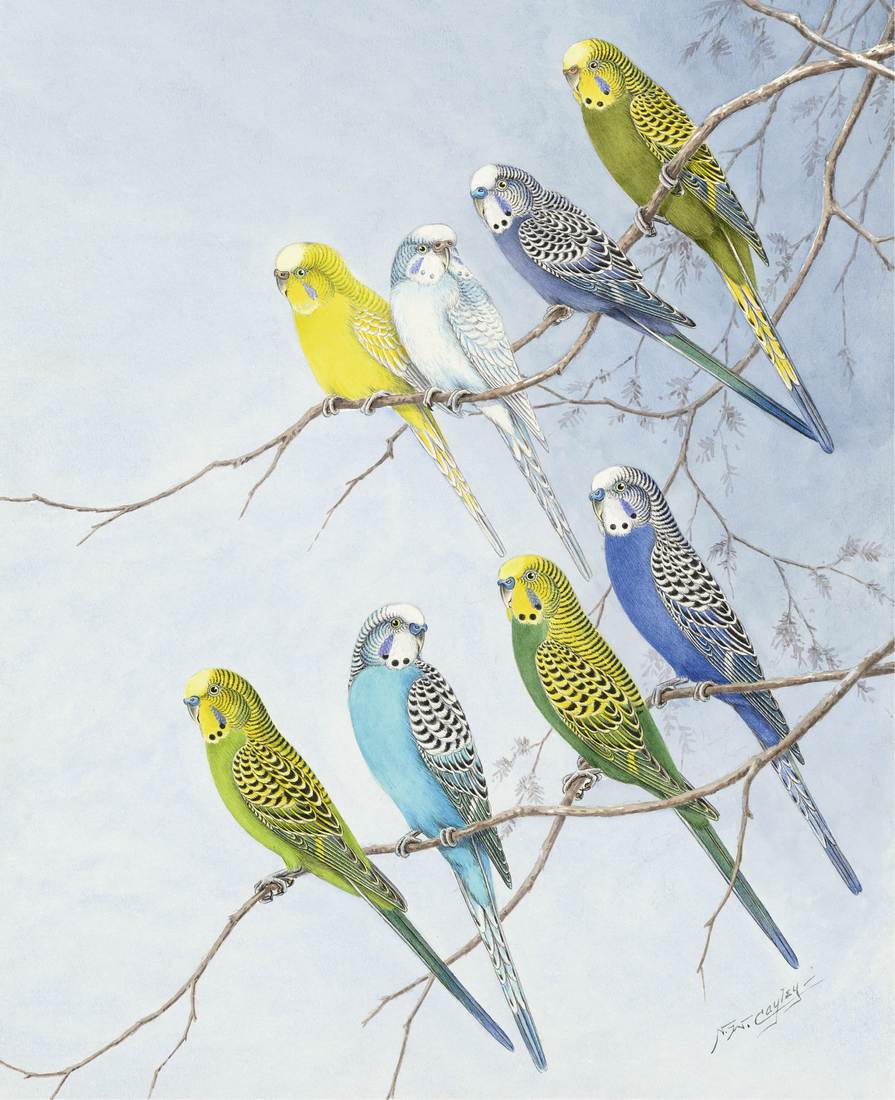Budgerigar
Melopsittacus undulatus
George Shaw was the first to describe the species, in 1805.
Melopsittacus combines the Greek melos (song) and psittakos (parrot), in reference to the Budgerigar’s pleasant warbling, which has been much admired since the earliest years of its domestication; the Latin undulatus means furnished with wave-like markings, referring to the patterning on the bird’s back.

Neville William Cayley, Budgerigar (Melopsittacus undulatus) 1930s
(adult females, top left and second from left, and top, right;
the males have a blue patch above the bill)
Author’s note: The original Budgerigar was a green and yellow bird of the Australian inland. By the 1870s, breeders had developed a yellow strain from a rare natural variant and, by the early 1900s, a stable blue form was available. There are now over 30 primary colour mutations, each with a great many variants.

William T. Cooper, Budgerigar (Melopsittacus undulatus) 1970 (adult male)
Author’s note: The male Budgerigar can be distinguished from the female by its blue cere (the skin at the base of the upper beak);
the female’s cere is brownish.

George Shaw (artist), Richard Polydore Nodder (engraver), Undulated Parrakeet (Psittacus undulatus) 1805
Author’s note: This illustration is the first published of the species.
John Gould took several live Budgerigars with him when he returned to England in 1840, but only a pair survived the voyage, and these were much coveted. Within a decade or two, thousands were being shipped from Australia for the pet trade. As one of the little parrot’s many adaptations to an arid environment, it can survive on seed alone, without water, provided temperatures are not too high. Hence, Budgerigars made the three-month voyage to England crowded together and without water. A great many died from the stress.




